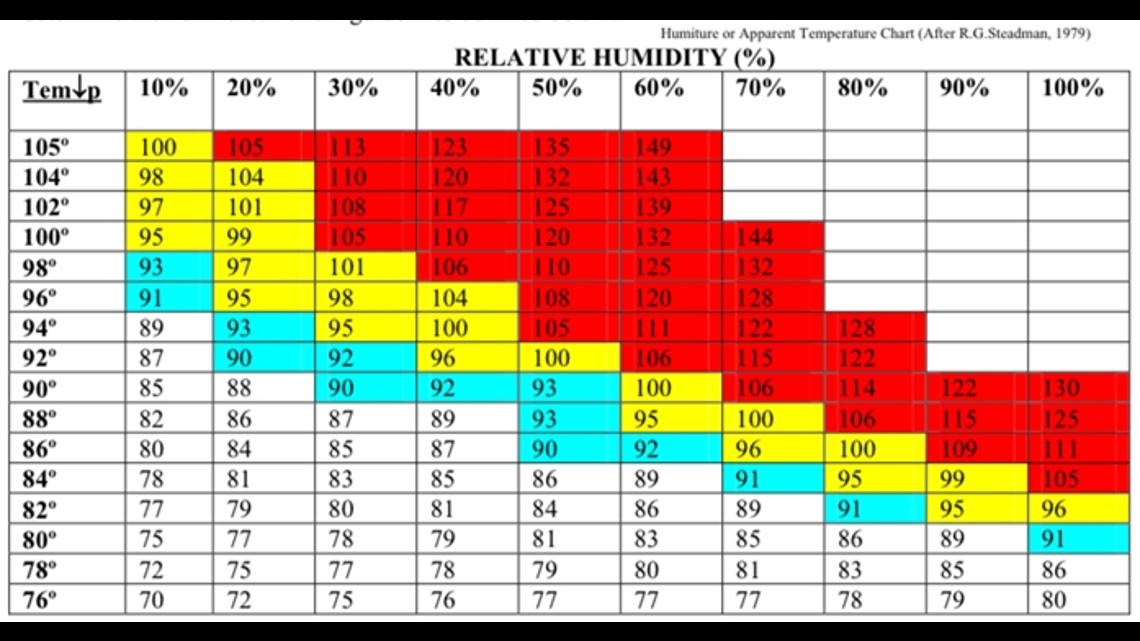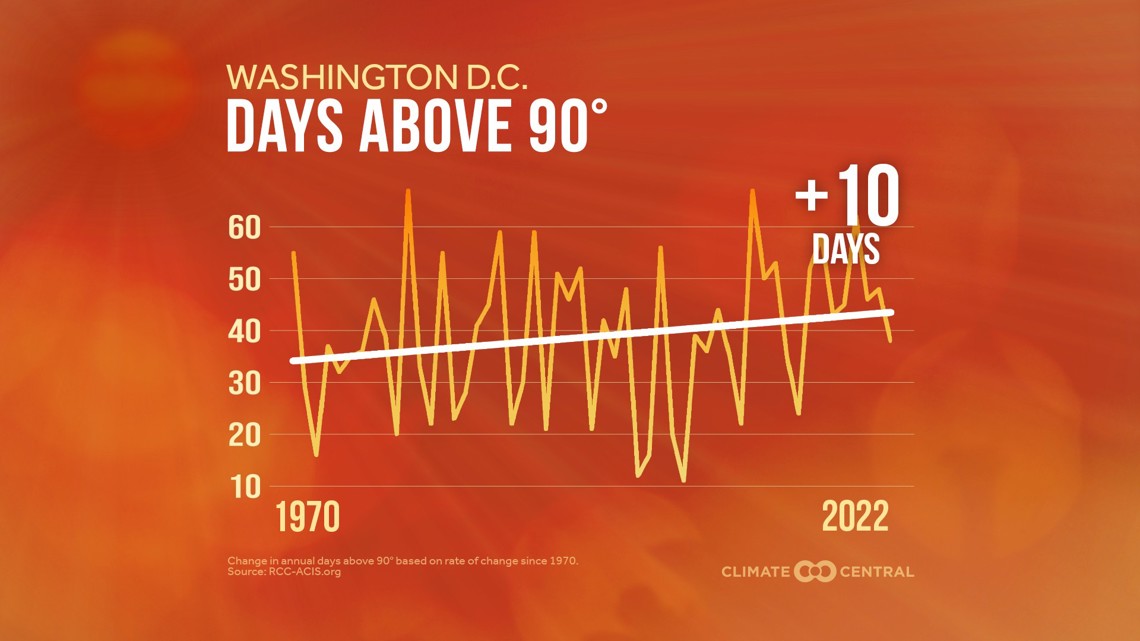WASHINGTON — On a hot August afternoon, the Yorktown High School varsity football team geared up for the first game of the season.
"Just go out there and hit hard no matter what the weather is. Am I right guys?" cheered one of the football players.
And while their enthusiasm is infectious, the reality is that the weather plays a big factor in how these students practice.
Heat stroke is the third-most common cause of sudden death among high school athletes, behind cardiac arrest and traumatic brain injuries; 67 high school athletes have died from exertional heat illness since 1982, according to the National Center for Catastrophic Sport Injury Research.
But Yorktown High School in Arlington is ensuring their athletes stay safe in the summer heat. Dr. Francis O’Connor, a sports medicine specialist and expert on exertional heat illness prevention, said there are ways to prepare and adapt your body to the heat.
"Usually climatization and adaptation take at least seven to 10 days," O'Connor said.
The National Federation of High School Sports (NFHSS) recommends that students start practice for the season in only helmets for three days, then move to shoulder pads, then progress up to full pads when the weather isn’t too hot. The decision on equipment usage is typically made by a team’s athletic trainer.
"ATCs have been proven to be worth their weight in gold," says O'Connor. "They take care of these athletes and interface with the coach to make sure that you're leveraging climatization and they've got an eye on each individual athlete and their risk and protecting them."
LaNay Coleman Burke is the head athletic trainer at Yorktown High School, but she said sometimes it feels like her job is even more than just training.
"I feel like the mom out here on the field," Burke said. "My duties are mainly to keep them safe and keep them playing."
She follows guidelines set forth by the NFHSS on when to make adjustments to what pads athletes are wearing and where they're practicing.
When the heat index value is above 105 degrees, the recommendation is for no outdoor activities. Between 95 degrees and 104 degrees, athletes are encouraged not to wear any kind of padding, including helmets. Between 90 degrees and 94 degrees it's recommended that equipment be removed as often as possible during rest breaks and on the sidelines, and athletic trainers are encouraged to carefully monitor for heat problems.


Even switching practice from artificial turf to grass can make a big difference. Turf surfaces can actually absorb and retain heat and make temperatures feel up to 10 degrees hotter than they already feel.
"It's like a fine ratio. You're trying to make sure that they're as healthy as can be and you want to push them as much as you can, but you also know that at some point that's detrimental to their health right," said Alec Hicks, the defensive coordinator for Yorktown High School. "And it affects your practice too; if your kids are sluggish and they're dehydrated, you're not going to get performance out of them."
These athletes also recognize the importance of taking care of themselves.
"Players have to be responsible and take care of their responsibilities of hydrating throughout the day before practice so when you come to practice you're already hydrated," said Drew Morgan, a senior at Yorktown High School. "Eating well, sleeping well, resting well, that kind of things, helps a lot in the heat."
Heat that we’re seeing more and more of. Since 1970, Washington, D.C., has seen a 10 day increase in annual days above 90 degrees, according to Climate Central.


That change is one Burke has noticed over her 12 years working with the team.
"We absolutely have had to have more modifications to our practices since I first came on board," Burke said.
While Yorktown High School has an athletic trainer, not all schools have the funding for this position. And O'Connor emphasizes that they are often times the best line of defense. Experts say another critical component to keeping athletes safe is having an emergency action plan. Recognition and early treatment can make the biggest difference in how an athlete can recover.

